The Sapphire Web Pack Market Picking functionality allows the user to enter in inventory items, goods, stock, etc. that the client has ordered. Once entered, it can be turned into a Picking slip and the user has the ability to either print a hard copy or pick from an iPhone, iPad or device that runs HTML5 or greater.
The Picking slip includes details of the grower, the unique batch number and what the selected inventory items, goods or stock is. From the Picking slip, your employees are able to then pick up the correct stock in accordance with the order and fulfil the order to that unique batch number.
The Picking functionality also allows the user to pick electronically. An employee can enter the warehouse/market with an iPhone, iPad or device that runs HTML5 or greater, and they can enter the Picking order electronically with a Bluetooth scanner by scanning the barcodes on each box, crate, etc. in accordance with Picking list. The electronic scanning of barcodes is a unique functionality within the Sapphire Web Market Pack, rather than manually entering the details of each order, this eliminates errors of Picking orders, for example, incorrect quantity amounts, incorrect stock being sent out, etc.
This is a game changer for the workflow of businesses and organisations as it is able to add date and time stamps in real time, specify who was working that shift and picking the stock from the unique login and password for each employee, the items scanned, the quantities entered, etc. The electronic Picking method allows for more transparency for the user rather than entering it manually on paper. It eliminates follow up and gives the provider complete visibility of the Picking process from beginning to end.
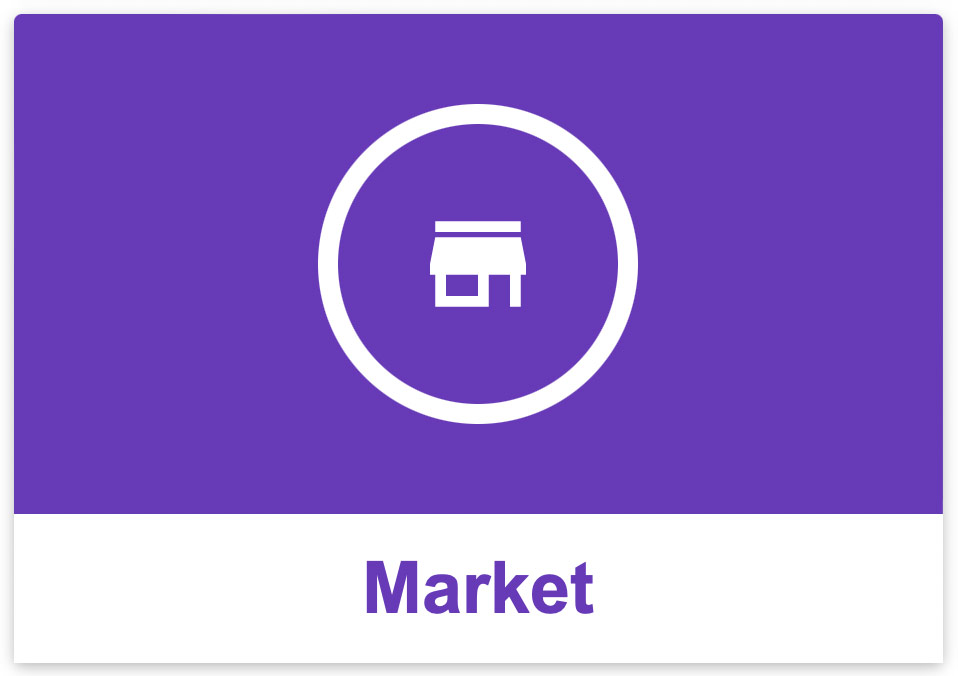
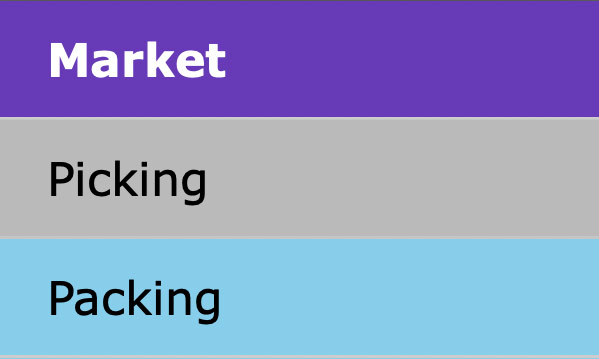
Picking Navigation Overview
Pickers need to go click on the Picking option of the Sapphire Web Pack Market list.
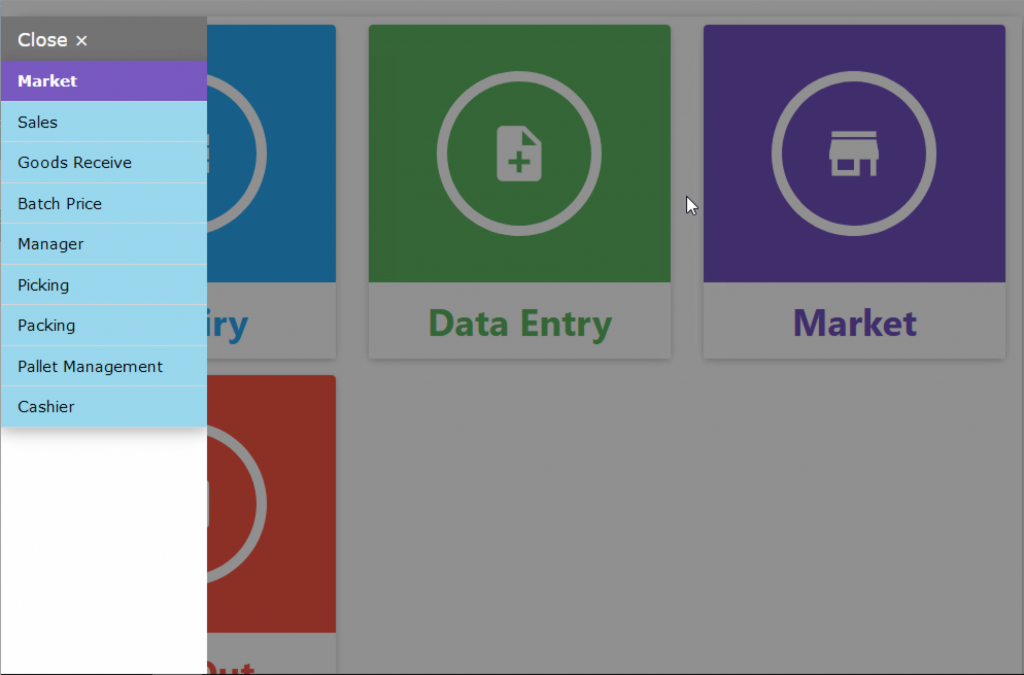
- Picking – Here they will see a list of all Orders that have been allocated to themselves for Picking

- Client Order – When a user selects an order to pick, they will then go into a screen where they will have the ability to allocate items within the order against a Pallet/s. The type of Pallet that they are to allocate items to will be defaulted to what is set-up either against the Client Record, or as allocated within the Sales or Manager process.
- Type – If a pallet has not been allocated at one of these stages of the fulfilment lifecycle, the picker will then have the ability to select the type of pallet that will be used.
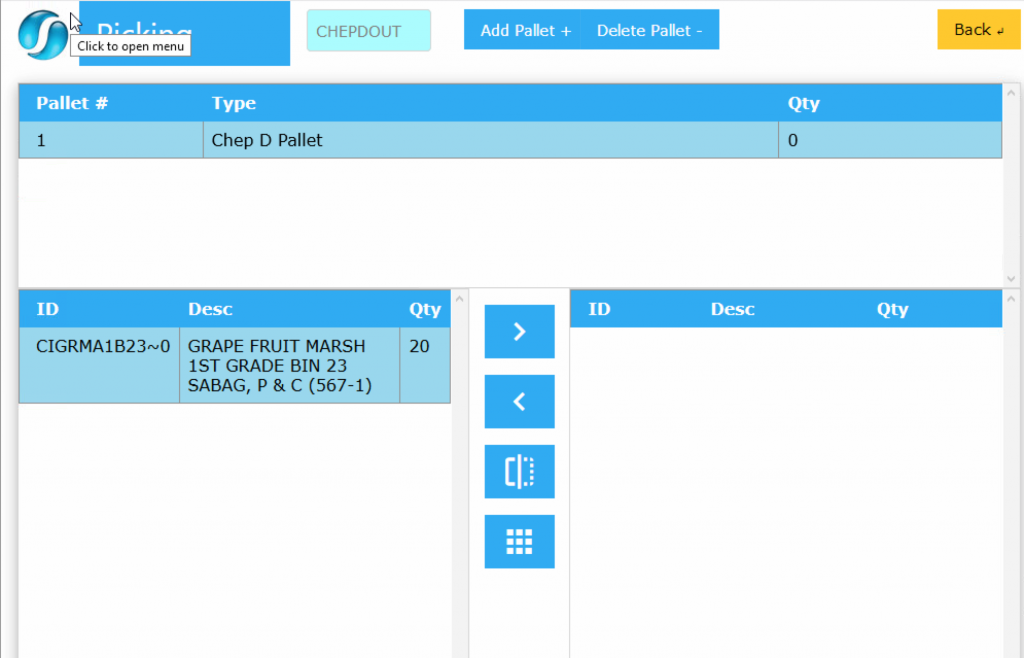
- Allocate – To allocate the full quantity of an item within the order to a pallet, users simply highlight the required pallet and then the item and click on the
 Arrow icon.
Arrow icon.
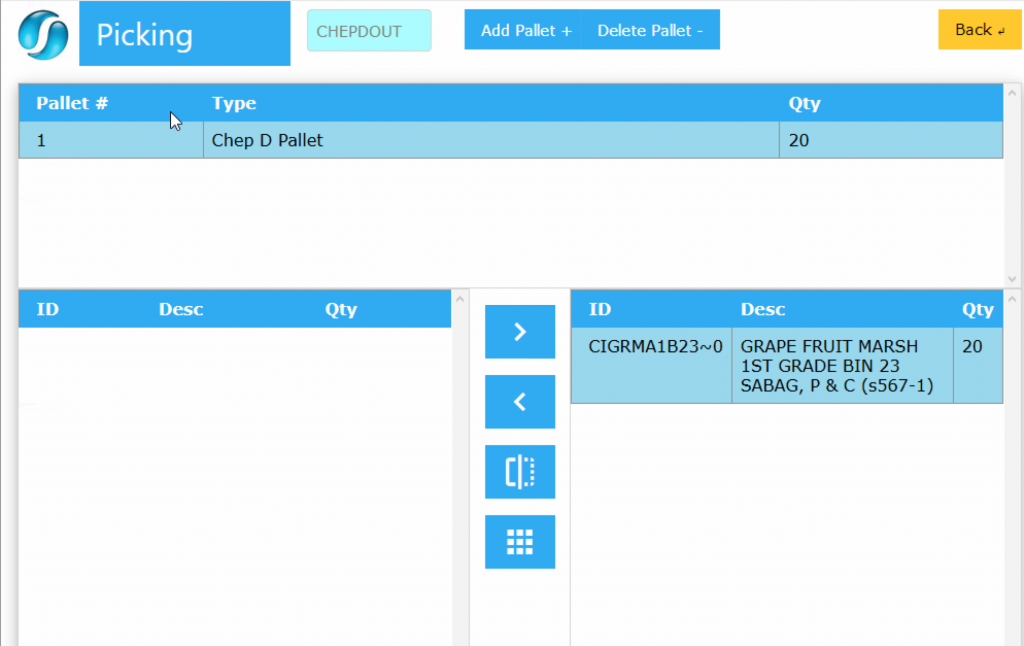
- Unallocated – To unallocated items against a Pallet users simply highlight the items and click on the
 Unallocated icon.
Unallocated icon.
- Quantity Split – If only part of the Quantity is going to be allocated to the pallet the user needs to select the pallet and the item then click on
 Quantity Split icon.
Quantity Split icon.

- Quantity – The picker will then enter the number Quantity required to be allocated to the pallet and click Accept.
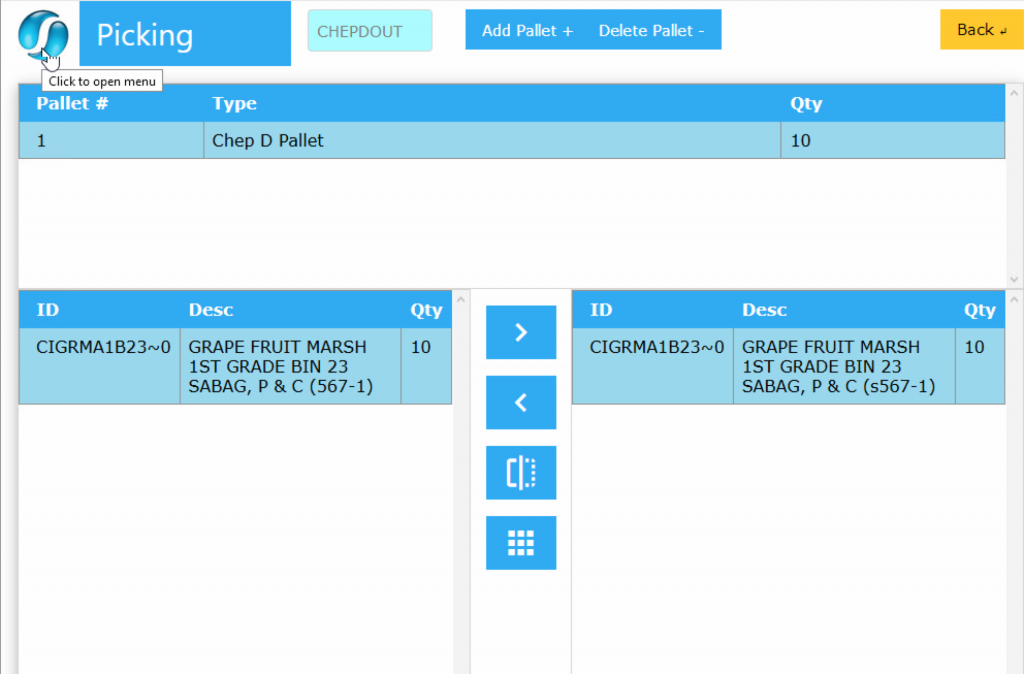
- Add Pallet – To allocate the remaining items to another pallet the user needs to click on
 Add Pallet icon and then highlight the items and select
Add Pallet icon and then highlight the items and select  Allocate button to allocate them to the pallet.
Allocate button to allocate them to the pallet.
- Split – To split an item across multiple pallets the user needs to select the item and click on
 Split icon.
Split icon.
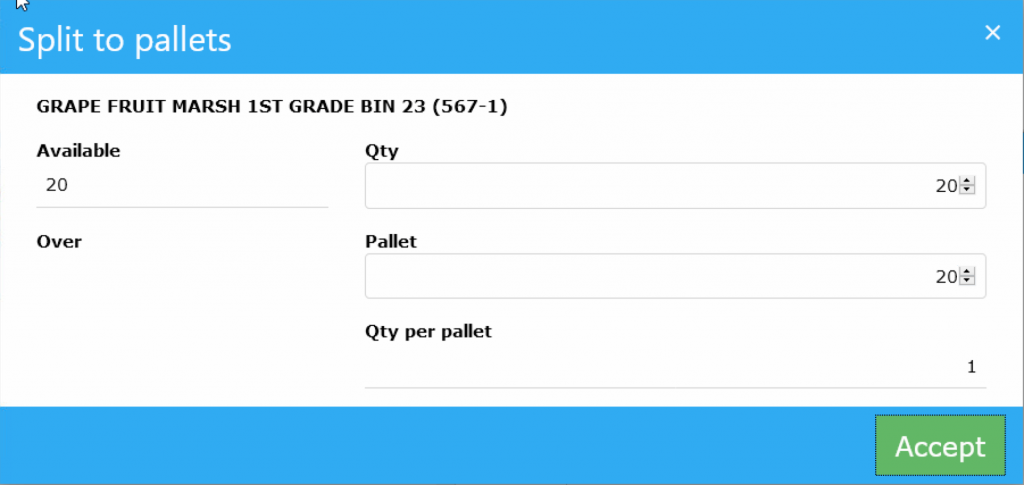
- Once the number of required pallets has been updated to the correct Qty per Pallet, click Accept. You can see that the new pallets are automatically created with the items allocated to them.
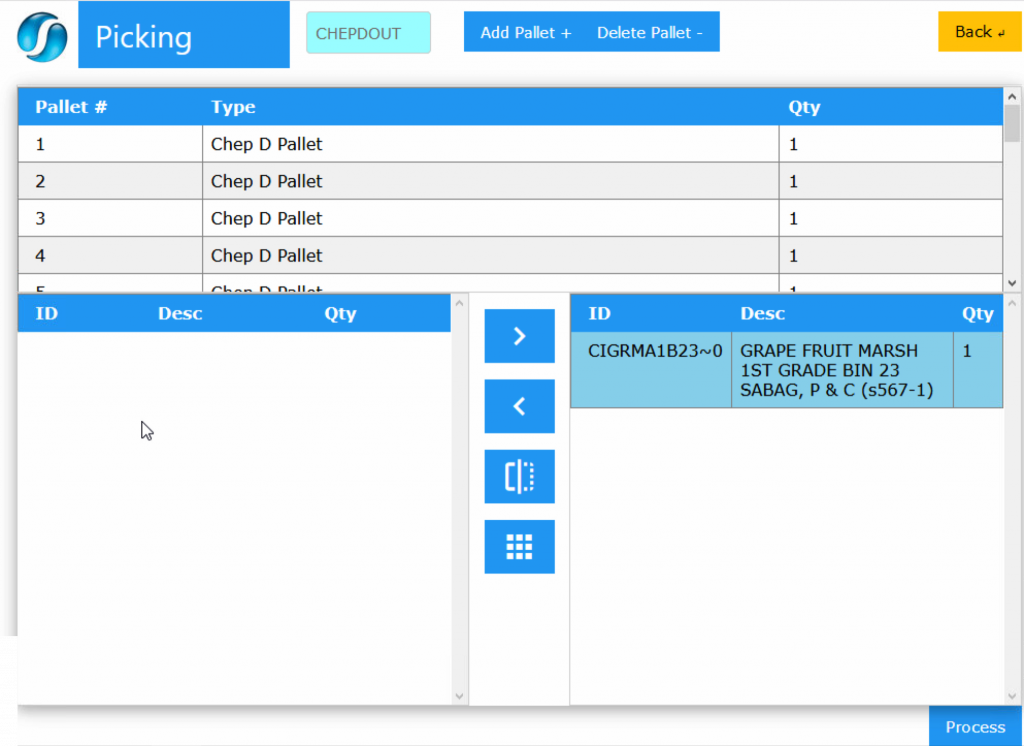
- Choose Pallet Type – If need be, a user can change the pallet type by highlighting the pallet and then clicking in the Blue box next to the “Add Pallet +” button. This will bring up a list of the different Pallet types that the user can then select.
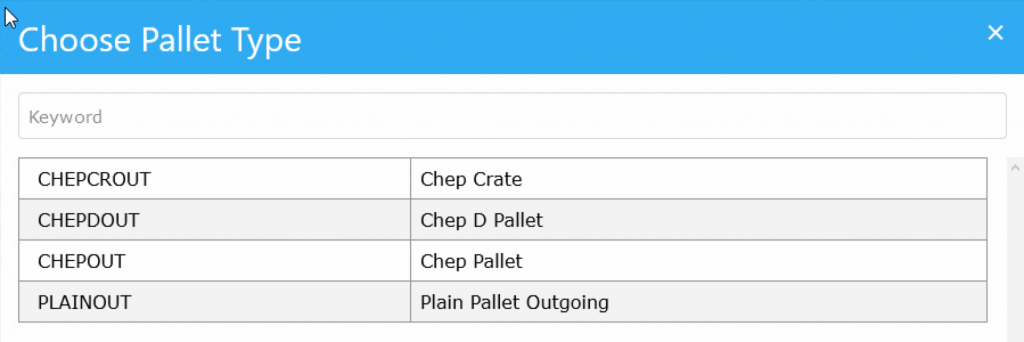
- Process – Once the picked items have been allocated against the pallets the picker can click on the Process button, which will then pop a screen confirming the Processing of the Transaction.

- Pallet/Shipping Label Print – Once you click Yes, the browser will then print the relevant Pallet/Shipping documents to a new tab in the browser where users can then select to print to the required printer.
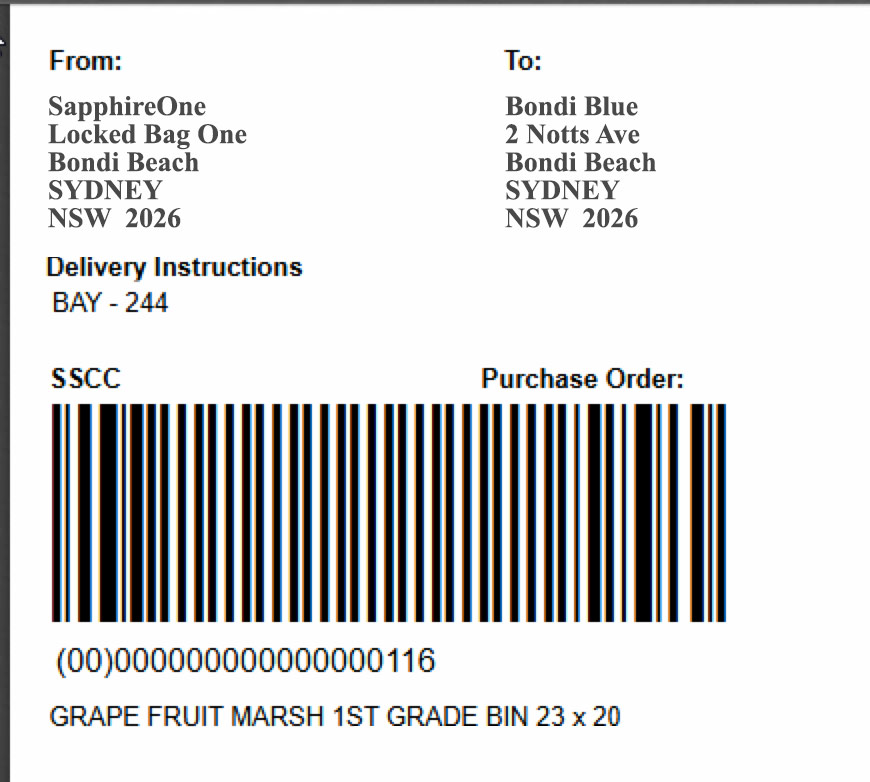
Dictation and Speech to Text Overview
SapphireOne’s Dictation (MacOS) and Speech to Text (Windows) functionalities revolutionise data entry. These features are available for any data entry field and all inquiry screens within SapphireOne. For instance, when a user makes a call via the SapphireOne Softphone, SapphireOne automatically timestamps the contact and phone number. Post-call, users can dictate notes directly into the CRM contact memo field in relation to the stamp.
This functionality is applicable across all Data Entry screens. As examples, when entering a Vendor Invoice (VI), users can dictate memos directly. Similarly, additional lines can be added to the General Ledger account, with each line having a unique memo field. After an employee interview, users can efficiently dictate notes.
Speech to Text and Dictation are powerful tools that SapphireOne and its clients use daily, significantly saving time.
You can review our Blog and YouTube channel for additional information and resources on SapphireOne ERP, CRM and Business Accounting software.